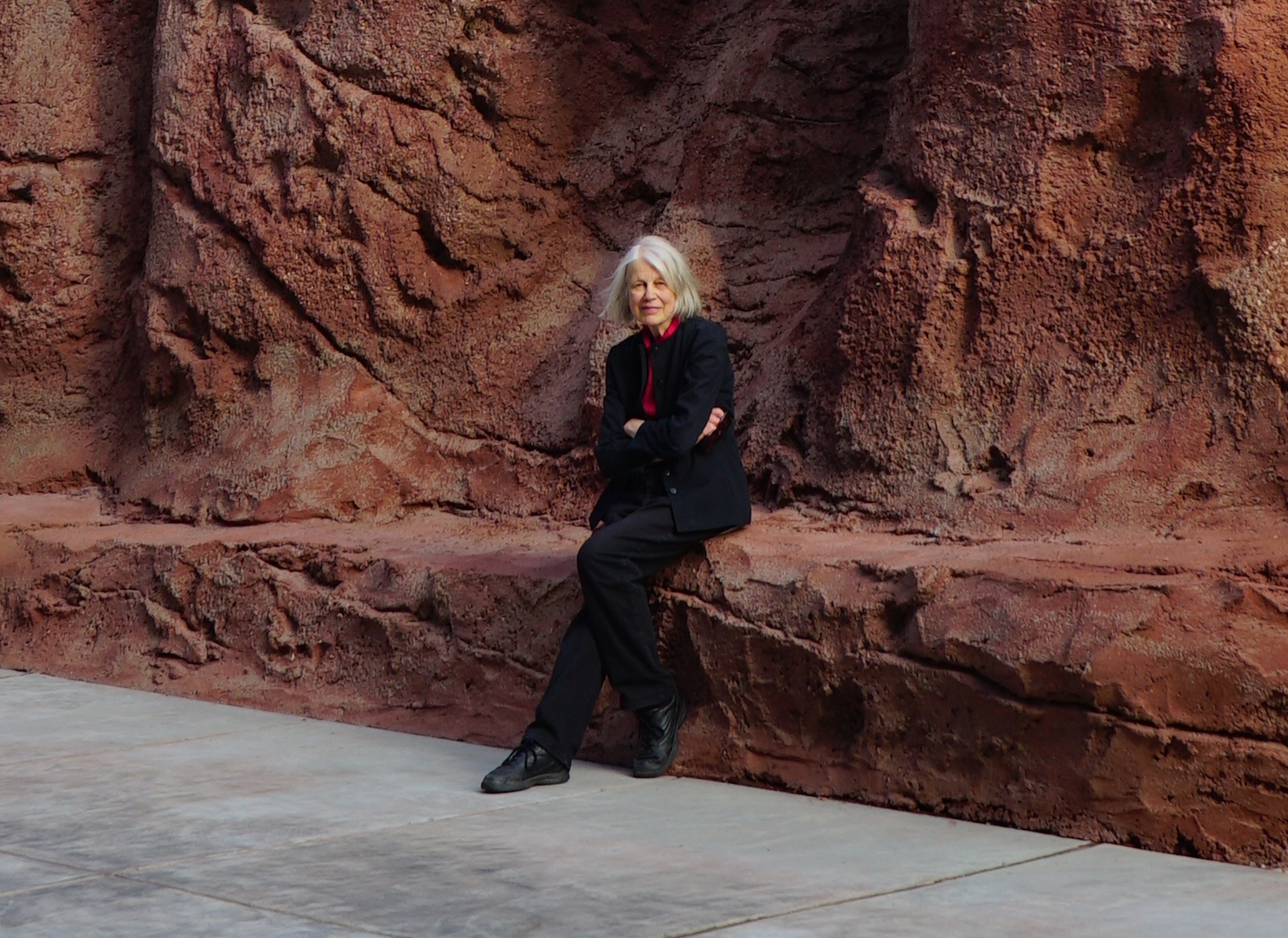Pioneering environmental artist Patricia Johanson, who merged art and engineering in a decades-long practice that sought to repair ecosystems marred by human activity, died last Wednesday, October 16 at the age of 84. The cause of death was heart failure, according to her son Gerrit Goossen.
“True to her nature, she lived years past the doctor’s expectations,” Goossen told Hyperallergic, adding that “she passed peacefully in her sleep with her favorite cat curled up by her side” in her home in Buskirk, New York, where she lived for more than 50 years.
Born on September 8, 1940, in New York City, Johanson developed an appreciation for the natural world early in life through her explorations of Frederick Law Olmsted’s public parks and visits to the nearby Catskill Mountains. She pursued an education at Bennington College, where she built friendships with Abstract Expressionist painters Helen Frankenthaler and Barnett Newman and made her first ambient installation, “Color Room” (1959). There, she also met the late art critic Eugene Goossen, whom she would marry and raise three children with.
During the 1960s, Johanson was heavily influenced by her mentor Georgia O’Keeffe, for whom she also worked as an assistant, cataloging the older artist’s paintings and photographs in Abiquiú, New Mexico. Her sculptures and paintings were featured in early Minimalist group shows including 8 Young Artists (1964) at the Hudson River Museum, Distillation (1966) at the Stable and Tibor de Nagy galleries, and the 1968 contemporary art survey Art of the Real at the Museum of Modern Art in New York.
Johanson’s 1968 Land Art project “Stephen Long” and subsequent 1969 commission for House & Garden magazine, in which she designed 150 gardens that attempted to solve environmental issues like erosion and flooding, marked a turning point in her career in the Eco-Art movement, foreshadowing later large-scale public works.

Some of her best-known works include “Fair Park Lagoon” (1981–86) in Dallas, Texas, which consists of two massive sculptures on the banks of the Leonhardt Lagoon, and “The Draw at Sugar House” (2003) in Salt Lake City, Utah. The latter features two large-scale sculptural works and allows floodwater from the basin in Sugar House Park, where it is installed, to safely drain into the nearby creek by flowing underneath the local highway.
“I’m astounded all over again as I have been over the years when called upon to focus on Patricia Johanson’s art and ideas,” wrote art writer Lucy Lippard in the introduction for Caffyn Kelley’s 2006 monograph on Johanson. “Of all the artists (so many of them women) who have become known over the last few decades for large-scale public art in/with nature … Johanson stands out as a seldom-acknowledged pioneer.”
While her oeuvre spans various mediums and movements, the impact of her site-specific public art projects continues to be felt.

In 1987, she created “Endangered Garden,” a publicly accessible concrete promenade along the San Francisco Bay resembling the shape of the endangered local garter snake. Commissioned by the San Francisco Arts Commission to cover the roof of a new sewer, the baywalk, which is 30 feet wide and one-third of a mile long, contains tidal sculptures, seating, a butterfly garden, and restored habitats for endangered local flora and fauna. The project inspired former McMaster University arts professor Judy Major-Girardin, who came across the project in 2019 while working with other professors and students on a redesign of the school’s West Campus and wetlands, which had been paved over in the mid-20th century to make space for a parking lot. The school hired Johanson as a consultant for the project, which is still ongoing.
“I was extremely impressed by Patricia’s pioneering work infusing infrastructure into public places while also preserving nature,” Major-Girardin told Hyperallergic. She added that she was especially awestruck by Johanson’s pathbreaking work as a woman artist in the 20th-century Land Art movement, which was largely overshadowed by men who “were somewhat destructive of nature.”
“She had ideas that were very, very different,” she added, “that were in harmony with nature before anybody was talking about it or even thinking about it.”

Editor’s Note, 10/21/2024, 10:05pm EDT: This article has been updated with the accurate date of Patricia Johanson’s passing.

